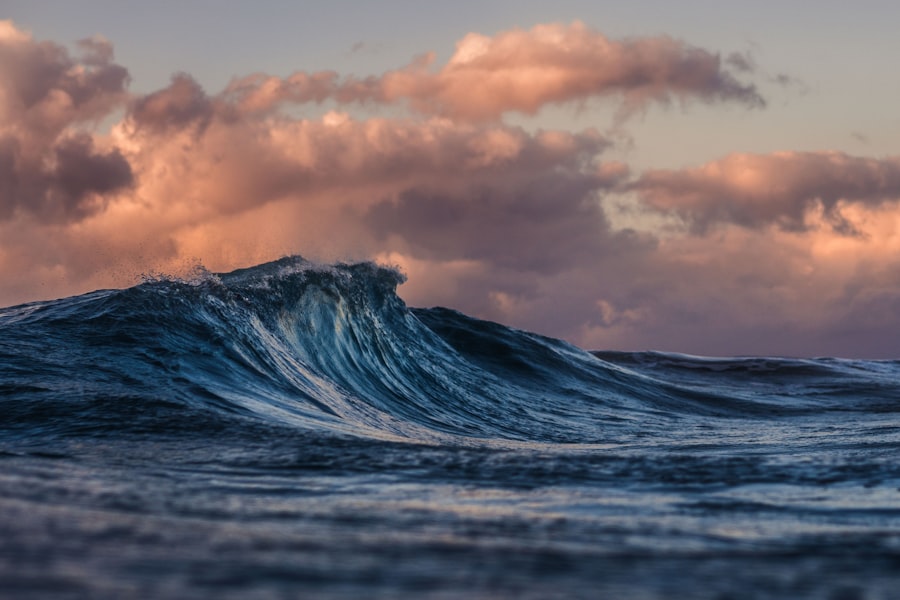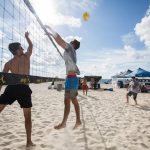Download links
How to install Riding the Waves: Exploring the Thrills of Ph630 Surfing APK?
1. Tap the downloaded Riding the Waves: Exploring the Thrills of Ph630 Surfing APK file.
2. Touch install.
3. Follow the steps on the screen.
Description
Surfing in the Philippines has a rich and storied history that dates back to the early 1970s, when it was introduced to the archipelago by foreign surfers. The first documented surf session occurred in 1975 at the famed surf spot of La Union, where a group of American surfers discovered the region’s potential for wave riding. This marked the beginning of a burgeoning surf culture that would eventually spread across the islands.
The sport quickly gained traction among locals, who embraced it as a new form of recreation and expression. By the late 1970s, surfing had established itself as a popular pastime, particularly in coastal towns where the waves were most favorable. As the years progressed, surfing in the Philippines evolved into a vibrant subculture, characterized by a unique blend of local traditions and international influences.
The 1980s saw the emergence of local surf competitions, which helped to foster a sense of community among surfers. Notable events such as the Philippine Surfing Championships began to attract participants from various regions, showcasing the growing talent pool of Filipino surfers. The sport continued to gain popularity throughout the 1990s and into the 2000s, with more surf schools and rental shops opening up to cater to both locals and tourists.
Today, surfing is not just a sport but a way of life for many Filipinos, deeply intertwined with their coastal communities and cultural identity.
Key Takeaways
- Surfing in the Philippines has a rich history dating back to the 1970s, with the sport gaining popularity in the country over the years.
- Some of the best surfing spots in the Philippines include Siargao, Baler, La Union, and Zambales, offering a variety of waves for surfers of all levels.
- Beginners can get started with surfing in the Philippines by taking lessons from experienced instructors, practicing proper paddling and standing techniques, and choosing the right surfboard for their skill level.
- Safety precautions for surfing in the Philippines include checking weather and wave conditions, wearing appropriate safety gear, and being mindful of local surfing etiquette and rules.
- What makes surfing in the Philippines unique is the combination of world-class waves, stunning natural scenery, and the warm hospitality of the local surfing community, creating an unforgettable surfing experience.
The Best Surfing Spots in the Philippines
Siargao Island: The Surfing Capital
Siargao Island is one of the most renowned surfing locations in the Philippines, often referred to as the surfing capital of the country. Its most famous break, Cloud 9, is celebrated for its powerful waves and hollow barrels, attracting professional surfers from around the globe.
La Union: A Vibrant Surf Culture
La Union, located on the northern coast of Luzon, is known for its consistent waves and vibrant surf culture. The beach town of San Juan is particularly famous for its beach breaks that cater to various skill levels. The annual Surf Festival held in La Union showcases local talent and attracts surfers from all over the country, further solidifying its status as a premier surfing destination.
Other Notable Surfing Spots
Beyond Siargao and La Union, the Philippines offers numerous other surfing spots, each with its unique wave conditions and breathtaking scenery. Baler and Pagudpud are two such destinations that are worthy contenders on any surfer’s itinerary.
Tips for Beginners: How to Get Started with Surfing

For those looking to dive into the world of surfing, starting can be both exciting and daunting. One of the first steps is to find a reputable surf school or instructor who can provide guidance tailored to your skill level. Many surf schools in popular destinations like Siargao and La Union offer beginner lessons that cover essential techniques such as paddling, popping up on the board, and understanding wave dynamics.
These lessons often include equipment rental, which allows newcomers to familiarize themselves with different types of boards without making a significant financial commitment upfront. In addition to formal lessons, beginners should prioritize safety and comfort in the water. It’s advisable to start surfing in smaller waves to build confidence before tackling larger swells.
Furthermore, understanding ocean conditions—such as tides, currents, and wind patterns—can significantly improve one’s surfing experience. Engaging with local surfers and asking questions can provide valuable insights into the best practices for navigating specific breaks.
Safety Precautions for Surfing in the Philippines
| Safety Precautions for Surfing in the Philippines |
|---|
| 1. Check the weather and surf conditions before heading out. |
| 2. Always wear a leash to keep your board close in case of a wipeout. |
| 3. Know your limits and don’t surf in conditions beyond your skill level. |
| 4. Be aware of rip currents and how to escape them. |
| 5. Respect local surf etiquette and give way to more experienced surfers. |
| 6. Stay hydrated and protect your skin from the sun with sunscreen. |
| 7. Always surf with a buddy and keep an eye out for each other. |
Safety is paramount when it comes to surfing, especially in the diverse conditions found throughout the Philippines. One of the most critical precautions is to always check local surf reports before heading out. These reports provide information on wave height, wind direction, and tide conditions, which can greatly influence safety levels at various surf spots.
Additionally, being aware of your own skill level is essential; beginners should avoid challenging breaks that may be beyond their capabilities. Another important aspect of safety is understanding potential hazards in the water. The Philippines is home to various marine life, including jellyfish and sea urchins, which can pose risks to unsuspecting surfers.
Furthermore, it’s crucial to be mindful of other surfers in the lineup; practicing proper surf etiquette—such as taking turns and respecting right-of-way—can prevent accidents and ensure a more enjoyable experience for everyone involved.
The Thrill of Riding the Waves: What Makes Surfing in the Philippines Unique
Surfing in the Philippines offers a unique blend of natural beauty and cultural richness that sets it apart from other surfing destinations around the world. The archipelago’s diverse geography means that surfers can find everything from powerful reef breaks to gentle beach breaks within close proximity. This variety allows surfers to experience different types of waves and conditions all in one trip.
Moreover, many surf spots are surrounded by stunning landscapes—lush green mountains, pristine beaches, and crystal-clear waters—that enhance the overall experience. Culturally, surfing in the Philippines is deeply intertwined with local traditions and community spirit. Many coastal towns have embraced surfing as part of their identity, leading to vibrant local cultures that celebrate this sport through festivals and events.
For instance, Siargao hosts an annual Surfing Cup that draws international competitors while showcasing local talent. This sense of community fosters camaraderie among surfers, creating an environment where sharing knowledge and experiences is encouraged. The warmth and hospitality of Filipinos further enrich this experience, making it not just about riding waves but also about connecting with people and immersing oneself in their way of life.
The Surfing Community in the Philippines: Events, Competitions, and Culture

The surfing community in the Philippines is dynamic and thriving, characterized by a strong sense of camaraderie among surfers from all walks of life. Various events and competitions are held throughout the year that not only showcase talent but also promote local culture and tourism. One prominent event is the Siargao Cloud 9 Surfing Cup, which attracts both local and international surfers eager to compete on one of the best waves in Asia.
This competition not only highlights exceptional surfing skills but also serves as a platform for environmental awareness initiatives aimed at preserving the natural beauty of Siargao. In addition to competitions, local surf festivals play a significant role in fostering community spirit. Events like the La Union Surf Festival celebrate not just surfing but also music, art, and local cuisine, creating an inclusive atmosphere that welcomes everyone—from seasoned pros to curious newcomers.
These festivals often feature live music performances, art exhibits, and food stalls showcasing regional delicacies, making them a feast for both the senses and the soul. Through these gatherings, surfers forge lasting friendships while promoting sustainable practices that protect their beloved beaches and ocean environments. The culture surrounding surfing in the Philippines is also marked by a deep respect for nature and an understanding of its fragility.
Many surfers actively participate in beach clean-ups and conservation efforts aimed at protecting marine ecosystems from pollution and overdevelopment. This commitment to environmental stewardship reflects a broader cultural ethos that values harmony with nature—a principle that resonates deeply within Filipino society. As surfing continues to grow in popularity across the archipelago, this community-driven approach ensures that both the sport and its surrounding environment remain vibrant for generations to come.
If you’re a fan of mobile gaming, you may also be interested in checking out the article about Call of Duty: Warzone Mobile on ph630. This popular game has made its way to mobile devices, allowing players to enjoy the intense action on the go. You can read more about it here.
FAQs
What is surfing?
Surfing is a water sport in which a person rides a board on the crest of a wave, typically while standing up.
What equipment is needed for surfing?
The main equipment needed for surfing includes a surfboard, leash, wetsuit, and wax. Additionally, surfers may use fins, traction pads, and other accessories.
Where is surfing popular?
Surfing is popular in coastal regions around the world, with notable hotspots in places like Hawaii, California, Australia, Indonesia, and South Africa.
What are the health benefits of surfing?
Surfing provides a full-body workout, improves cardiovascular fitness, enhances balance and coordination, and can have positive effects on mental well-being.
What are some common surfing terms?
Common surfing terms include “wipeout” (falling off the board), “barrel” (the hollow part of a wave), “duck dive” (a technique for getting through breaking waves), and “cutback” (a maneuver to change direction on a wave).
What are the different types of surfboards?
There are several types of surfboards, including shortboards, longboards, fish boards, and funboards. Each type is designed for different wave conditions and surfing styles.





